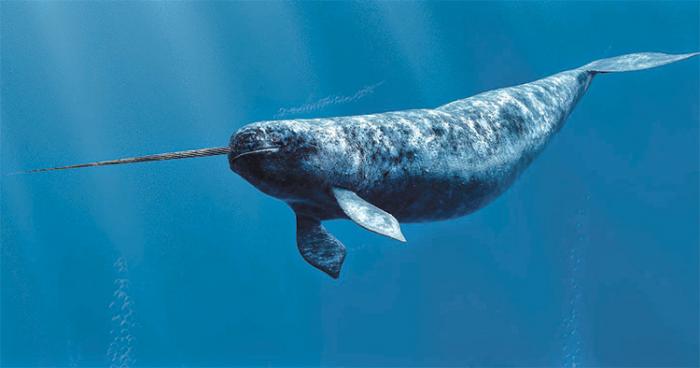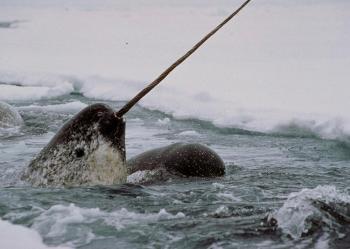
Have you ever seen a unicorn? You might see one in the Arctic waters. Not a real unicorn, but a unicorn of the sea – a narwhal. A narwhal, which is a medium sized whale, earned its name from the “horn” protruding from its head. This is actually a tusk, a long tooth on its upper jaw. The tusk can grow up to 10 feet long, which can be half the length of its body. Scientist aren’t sure why male narwhals have a tusk. Is it to fight other males like a sword or is it a feature to impress female narwhals?
Narwhals live in groups called pods. They travel together in pods of 15-20 to help keep them safe from predators, including killer whales, polar bears and walruses. The Inuit hunt narwhals for food and their tusks. Narwhal blubber can be an important part of the Inuit diet loaded with vitamin C.
Narwhals are mammals. They rest near the surface of the water so they can breathe before diving deep into the water searching for food. They breathe oxygen through a hole in the top of their head called a blowhole. Narwhals have no teeth, except its tusk. They suck food into their mouths and swallow their food whole.


- The tusk will alert the narwhal to temperature changes and movement in the water.
- Narwhals have tails called flukes that are shaped like fans.
- The narwhal’s tusk continues to grow throughout its life and can bend about a foot in any direction. If the tusk breaks, it never grows back.
- Narwhals change color with age – blue-gray as a newborn, blue-black as a juvenile, spotted gray as an adult, nearly white as an older adult.
Narwhal by Kate Marsico (J599.543MAR)
Narwhals and Other Whales by Mary Pope Osborne (J599.543OSB)
Narwhal Whales Up Close by Jody Sullivan Rake (J599.543RAK)
